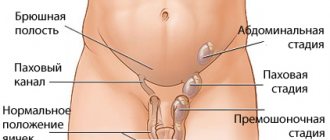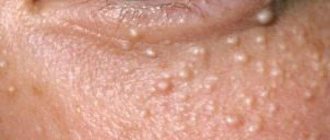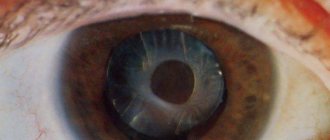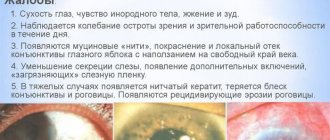What's happening?
The internal mechanism of spasticity is not fully understood; according to experts, this disorder occurs as a result of various disorders in the structures of the brain and spinal cord.
Externally, spasticity manifests itself as an increase in tone in muscle tissue, which increases significantly during muscle stretching.
In other words, spasticity provokes muscle resistance during passive movements. It is at the beginning of the movement that the muscle resistance is strongest, and when the speed of passive movements increases, the resistance force increases accordingly.
Muscle spasticity causes changes in muscles, tendons and joints such as fibrosis, atrophy or contracture. This leads to increased movement disorders.
Complex of reasons
The main cause of spasticity is an imbalance in the signals traveling from the brain and spinal cord to the muscles.
In addition, reasons may be:
Aggravating factors
If a patient has spasticity, the following factors can aggravate the situation:
- constipation and intestinal infection;
- skin infectious diseases that are accompanied by inflammation;
- infectious diseases of the genitourinary system;
- clothing that restricts movement.
Regardless of the severity of the disease, these factors can cause the condition to worsen.
Diseases accompanied by spasticity
Any damage to the conductive tracts of the spinal cord or brain can lead to the development of spasticity of muscle groups. Skeletal muscle spasticity occurs after:
- past infections of the central nervous system (encephalitis, meningoencephalitis);
- hypoxia of any origin, including reperfusion syndrome;
- traumatic brain or spinal injuries (including cerebral palsy);
- cerebral stroke.
Muscle spasticity is one of the symptoms of multiple sclerosis and can accompany any form of osteochondrosis.
Spasticity and spasms
Spasticity is often accompanied by the presence of spasms, which manifest themselves in involuntary contraction of one or a group of muscles. In some cases, spasms are accompanied by pain of varying intensity.
The occurrence of spasms can occur either as a result of exposure to any irritant or independently.
Spasticity can be mild or severe. In the first case, this condition is not a serious obstacle for the patient, and he is able to lead a normal life, whereas in severe cases the person is forced to move around in a wheelchair.
It should be noted that the severity of a condition such as muscle spasticity may change over time.
But there are cases of positive effects of spasticity. For example, patients with paresis (weakness) in the legs have the ability to stand independently precisely due to muscle spasm.
Types and types of violation
According to qualifications, three main types of spasticity can be distinguished:
- The flexor type is the increased tone of the flexor muscles when bending the limbs at the joints and lifting them.
- The extenotic type is an increase in the tone of the extensor muscles in the process of straightening the limbs in the joints.
- The adductor type includes an increase in tone when crossing in the area of the legs and closing the knees.
Pathogenesis of post-stroke spasticity
Spasticity often occurs in patients who have had a stroke. In such cases, physiotherapy is ineffective, and the presence of spasms complicates the patient’s recovery.
The muscles are constantly toned, pathological changes begin to occur in them, and joints and tendons also suffer. In addition, contractures (deformations) occur, significantly aggravating the problem.
The development of spasticity does not occur immediately; as a rule, it occurs 2-3 months after a stroke, but the first signs can be noticeable to a specialist much earlier.
The shoulders, elbows, wrists and fingers are usually affected, while the lower body is affected by the hips, knees, ankles and toes. In this case, spasticity affects the flexor muscles in the upper extremities, and the extensors in the lower extremities.
In the absence of the necessary treatment, contractures appear in the joints and bones over several years.
Pathogenesis of spasticity in multiple sclerosis
Spasticity is a concomitant phenomenon of multiple sclerosis in most cases. It manifests itself as an unexpected contraction of a muscle group, occurring spontaneously or as a reaction to an irritant.
The severity of muscle spasms in patients with multiple sclerosis can vary, ranging from mild to severe, manifesting as severe and prolonged spasms. The shape of gravity can change over time.
In multiple sclerosis, spasticity occurs in the muscles of the limbs, and in rare cases affects the back muscles.
Introduction
Spasticity is one of the types of muscle hyperactivity that occurs in patients after focal damage to the central nervous system (CNS) and is considered the most disabling manifestation of upper motor neuron syndrome (UMNS) [1].
The European group EU-SPASM proposed an interpretation of spasticity as a violation of sensorimotor control due to damage to the upper motor neuron, manifested by intermittent or prolonged involuntary muscle activation [2, 3]. The mechanisms of increasing muscle tone are not fully understood. The basis for impaired muscle tone due to damage to the upper motor neuron is a complex and incompletely studied set of changes both in the central nervous system and in the periphery - in the muscles [4, 5]. According to recent epidemiological data, spasticity develops on average in 35% of cases in patients who have suffered a stroke, and in 75% of cases in patients after severe traumatic brain injury [6, 7]. However, spasticity can develop in a number of other diseases. In particular, the prevalence of spastic paresis due to multiple sclerosis, according to various sources, varies from 66 to 84% [8, 9]. Thus, spasticity is becoming an increasingly socially significant problem in modern medicine due to the wide prevalence of nosologies underlying it [6, 7].
Botulinum therapy is a recognized effective and safe method of treating spastic paresis. In this regard, botulinum toxin type A (BTA) preparations are actively used in rehabilitation regimens for patients with spasticity to reduce abnormally increased muscle tone of the limbs. And if the use of BTA drugs to reduce muscle tone and improve the function of the upper limb is already a proven fact: the positive effect of BTA drugs to improve the function of the lower limb against the background of a decrease in muscle tone is not entirely obvious and requires further study [5].
Updating the problem of spasticity of the lower limb
Spasticity syndrome, regardless of the cause of its occurrence and location, is a significant source of disability. Increased muscle tone in various muscle groups of the lower limb can cause significant discomfort, muscle spasms, cramps and pain. It is worth noting that in most cases, spasticity of the lower extremities can be more disabling than spasticity of the upper extremities, primarily due to the fact that even slightly increased muscle tone can impair weight-bearing function of the extremity, thereby affecting gait and balance. Lack of ambulation is associated with loss of independence and premature disability in patients, and among the elderly population significantly contributes to adverse health outcomes, including difficulties with daily activities and increased mortality [10–12]. In addition, in the absence of adequate treatment, patients with lower limb spasticity often develop secondary complications that impair mobility, such as tendon shortening, contractures, joint deformities and, as a result, falls and fractures, which ultimately leads to even greater immobilization of patients and a sharp decrease in their quality of life [13, 14]. The occurrence of secondary complications can subsequently lead to serious secondary problems, including deep vein thrombosis [14] and pressure ulcers [15]. Thus, the universal human and economic significance of timely detection, treatment and adequate rehabilitation of patients with spasticity in the lower limb is obvious [16].
Pathological patterns of the lower limb
Due to abnormally changed (increased) muscle tone in the lower limb, depending on the location of the damage to the upper motor neuron, different pathological patterns arise: hip adduction, flexion/extension in the hip joint, flexion in the knee joint, equinovarus deformity of the foot, flexion of the toes and others, in the formation which involve various muscle groups. Thus, the hip adduction pattern involves the adductor magnus, longus, brevis and gracilis muscles, which can also flex the leg at the hip joint. In the knee extension pattern, among the four components of the quadriceps muscle - the muscle bellies - the medialis and lateralis muscles primarily stabilize the knee joint, while the intermedius and rectus femoris muscles serve as extensors in the knee joint. The rectus muscle is a two-joint muscle and also takes part in flexion at the hip joint. In flexion of the knee joint, the main role is played by the semitendinosus, semimembranous, and biceps femoris muscles, which are also involved in hip extension and adduction. A flexor in the knee joint, but weak is the calf muscle, which is also a strong extensor in the ankle joint. In a finger flexion pattern, it is necessary to clearly assess which joints have flexion. Thus, the flexor digitorum longus produces flexion in the distal interphalangeal joints of fingers 2–5, and the flexor digitorum brevis produces flexion in the proximal interphalangeal joints. The interosseous and lumbrical muscles of the foot perform flexion at the metatarsophalangeal joints and extension at the interphalangeal joints. The muscle is the long extensor pollicis, forms the extension pattern of the 1st toe, and together with the tibialis anterior muscle provides simultaneous adduction and supination of the foot. The muscle is the long extensor of the foot, and the peroneus muscle is involved in abduction and pronation.
It is worth noting that there are some differences in the formation of one or another pathological pattern depending on the etiological factor causing the development of spasticity syndrome [16, 17]. Thus, in patients who have suffered a stroke, the most common manifestation of spasticity of the lower extremity is the equinovarus plantation of the foot, the lack of optimal contact with the ground due to the inversion of the foot when placing it on the ground due to hyperactivity in the gastrocnemius, soleus and/or tibialis posterior muscles, which leads to disruption of the normal cycle of stride, balance and walking in general, leads to improper distribution of the body's load and can cause falls, pain and other problems. In turn, the most common patterns of spasticity in the lower extremities in multiple sclerosis (MS) are spasticity in the adductor muscles of the hips, flexion of the knee joints, and plantar flexion of the foot [16, 18]. Analysis of the patterns that arise in the patient is necessary to select muscles in order to assess the involvement of each muscle in their formation. Often, assessing the muscles involved in the pattern is extremely difficult due to the fact that even the normal act of walking is extremely complex, since different muscles are involved in it in different phases, and when spasticity occurs, some muscles are partially involved or not involved at all, while other muscles begin to take over the function paretic, including compensatory. It is very informative and in some cases simply necessary to use special diagnostic instruments and devices that allow one to assess the involvement of certain muscles in various phases of walking [5].
The role of botulinum therapy in the treatment of spasticity of the lower limb: data from clinical studies, systematic reviews, clinical guidelines
The introduction of BTA into clinical practice has had a significant impact on the treatment of focal spasticity. Currently, the use of BTA is considered to be a well-tolerated and effective treatment method [19–22]. Botulinum toxin therapy has become a recognized and safe treatment for spastic paresis with a high level of evidence-based recommendations [5, 23].
According to the most recent 2016 American Academy of Neurology report, two drugs—Dysport® (abobotulinumtoxinA) and Botox (onabotulinumtoxinA)—with the highest level of recommendation A are recommended for the treatment of focal spasticity of the upper and lower extremities in adults. The drug Xeomin (incobotulinumtoxinA), existing on the Russian market since 2008, does not yet have a sufficient evidence base in the treatment of spastic paresis of the lower extremities, the level of conviction of recommendations is U [23].
It is worth noting that in the Russian Federation, abobotulinumtoxinA is the only toxin that can be used for injection into the muscles of the entire lower limb, including the thigh muscles. The total number of muscles of the lower extremities registered in the instructions for the drug is 14.
Clinical recommendations are based on data from well-designed multicenter randomized clinical trials (RCTs) compared with a control group.
As a result of the analysis of such studies, the advantage of BTA compared to placebo was demonstrated in a number of indicators: decrease in muscle tone, general assessment by a physician (PGA - Physician's Global Assessment), effect on active and passive functions of the limb, etc. [24–26]. Also, a number of studies have obtained data confirming an improvement in walking function against the background of a decrease in tone in the muscles of the lower limb during BTA injections. Thus, the effectiveness and favorable safety profile of the use of abobotulinumtoxinA for patients with spasticity of the lower limb are confirmed by the results of a randomized, double-blind and extended (open) phase study (ALL) [27]. This study involved 11 countries (52 centers) and included more than 350 patients with stroke and traumatic brain injury. Injections of abobotulinumtoxinA in doses of 1000 IU and 1500 IU were performed into the muscles of the leg: soleus and gastrocnemius and at least one additional muscle, incl. from the proximal muscle group of the lower limb. Both doses of abobotulinumtoxinA Dysport (1000 units and 1500 units) demonstrated statistically significant reductions in soleus muscle tone at weeks 4 and 12 in the blinded phase of the study. Injections of abobotulinumtoxinA at a dose of 1500 units into the gastrocnemius and soleus muscles were also accompanied by a statistically significant decrease in muscle tone at 4 weeks after injection (p = 0.0091), with a statistically significant difference remaining until the 12th week (p = 0.0324) . The reduction in tone in this muscle group, achieved in the double-blind phase, remained stable throughout the open-label phase of the study [27]. As part of the ALL study, not only muscle tone was assessed using the MAS scale (Modified Ashworth Scale), but also an additional quantitative analysis of spasticity using the Tardieu scale, the use of which, according to domestic recommendations released in 2021 under the auspices of the Union of Rehabilitation Therapists, is considered more preferable for spasticity scores compared with the MAS scale [5]. The results of the double-blind and open-label phase of the study demonstrated a decrease in the severity of true spasticity in the ankle flexor muscles, which was accompanied by an increase in the range of active movements. To assess the active function of the lower limb, an analysis of changes in comfortable walking speed was carried out using a 10-meter walking test. Repeated injections of abobotulinumtoxinA were associated with a progressive increase in walking speed in the open phase of the study. The improvement in walking speed at week 12 compared to week 4 reached a statistically significant difference in all subsequent cycles (p < 0.001), which may indirectly indicate a longer effect of the drug (above the standard 12-week interval). According to the results of the 4th cycle of injections, walking speed increased by 25% compared to the initial level (Figure). It is worth noting that in 16% of patients who underwent 4 cycles of injections, in the open phase of the study, walking speed reached 0.8 m/s or more, which exceeds the plateau value for this parameter (~0.7 m/s) in the late recovery period after stroke. Thus, a 25% increase in walking speed from the initial level in this category of patients allowed them to move to a higher functional class of walking, characterized by the ability to move independently in public places without assistance [27]. The results of the study regarding the increase in walking speed confirm the fact that in order to realize the effect of botulinum therapy on the active function of the lower limb and increase the range of active movements, several cycles of BTA injections are necessary, which is associated with the need for patients to adapt to a new walking pattern in conditions of decreased muscle tone.
A distinctive feature of this study is the development of criteria used to assess the need for repeat injections. In the open phase of the study, the conclusion on a second injection was made individually for each patient at the decision of the investigator, according to the developed criteria within the framework of the study protocol. This approach not only made it possible to flexibly choose the time of re-injection for each patient individually, but also made it possible to analyze the duration of action of the drug. According to the second cycle of therapy in the open phase of the study, a second injection was performed at week 16 or later in 32% of patients, which certainly expanded the “therapeutic window” for effective rehabilitation/self-rehabilitation during the entire period of action of the drug [5, 27]. In addition, a longer interval between injections - beyond the standard 12 weeks (up to 16 weeks or more) - potentially allows patients receiving regular treatment with abobotulinumtoxinA to reduce the financial “burden” on the patient or on health care structures in case of providing patients with drugs according to benefit program [28].
This study also assessed the safety profile of abobotulinumtoxinA injections. The number of serious adverse events in patients receiving abobotulinumtoxinA injections at doses of 1000 units and 1500 units was comparable to the placebo group (3.9%, 3.9 and 5.4% respectively), which is consistent with previously known data. An interesting fact was a decrease in the incidence of side effects from cycle to cycle of abobotulinumtoxinA injections according to the results of the open phase of the study, which confirms the favorable safety profile of the drug when long-term treatment is necessary [5, 27].
Another study evaluating the effectiveness of abobotulinumtoxinA compared with placebo was the study by SJ Pittock et al., which involved 234 patients who had suffered a stroke with the formation of a pathological pattern of equinovarus foot deformity in the lower extremity. Three doses of Dysport were evaluated: 500 units, 1000 units, 1500 units in the gastrocnemius and soleus muscles. The 1500 U dose demonstrated a statistically significant decrease in tone in the calf muscles (week 4: p=0.012; week 8: p=0.017; week 12: p=0.019). Injections at doses of 500 units and 1000 units also showed a statistically significant decrease in muscle tone in the gastrocnemius and soleus muscles at week 4 (p = 0.009 and p = 0.0002, respectively). In the group of patients who received injections of abobotulinumtoxinA, a decrease in the severity of pain in the knee and ankle joints and foot was also noted. The greatest reduction in pain was observed with the administration of Dysport in doses of 1000 and 1500 units on the 8th week (p = 0.0019 and p = 0.0066, respectively), with a statistically significant difference remaining in the 4th and 12th weeks, although less pronounced (dose 1000 units, 4th week: p=0.0044, 12th week: p=0.0128; dose 1500 units 4th week: p=0.0040, 12th week: p= 0.0488). A slight decrease in pain severity was also noted for a dose of 500 units at week 8 (p = 0.0222). Additionally, there was a decrease in the use of walking aids/orthoses in the group of patients who received injections of abobotulinumtoxinA in doses of 1000 and 1500 units (p=0.0100, χ2 test and p=0.0000, respectively) with the development of a maximum effect on the 4th week, which is an extremely significant positive effect for such patients. A statistically significant increase in 2-minute walking distance was observed in all groups, including the placebo group (p≤0.05).
The study reported 130 adverse events in 68 patients, with approximately equal distribution between groups [29]. Of particular interest are patients with spastic paresis in the lower extremities due to multiple sclerosis (MS). The high medical and social significance of the MS problem is due to the fact that the disease affects mostly young people who are active in labor and social activities [16, 30]. Spastic paresis is one of the most common symptom complexes in patients with MS, which tends to progress and develop complications, requiring special attention from a doctor in order to timely prevent secondary symptoms and effectively carry out rehabilitation measures. This is the most common problem for patients with the chronic type of MS (primary and secondary progressive types), the onset of the disease in most cases begins with the development of spastic paresis. In order to reduce the level of disability (prevent the development of contractures), it is necessary to begin treatment with BTA as early as possible [31]. To date, there is insufficient information on the use of BTA in this category of patients, but at the same time there is a significant need for symptomatic treatment of spastic paresis as a result of MS.
One of the studies examining the feasibility of using botulinum therapy in patients with spasticity syndrome due to MS was a double-blind, placebo-controlled study of the effectiveness and safety of three doses of abobotulinumtoxinA in patients with spasticity in the hip adductors. The primary endpoint of this study was passive hip abduction and knee distance. Other effectiveness parameters were also assessed: active hip abduction, muscle tone (on the MAS scale), assessment on the scale of the possibility of carrying out hygienic procedures, duration of effect after injection, etc. Injections were carried out in doses of 500 IU, 1000 IU and 1500 IU in the adductor muscle complex hips (mm. adductormagnus, adductorlongus, adductorbrevis). The results of the study confirmed the effectiveness of abobotulinumtoxinA therapy in increasing the distance between the knees, with a statistically significant difference for the dose of 1500 units (p = 0.02). In addition, both doses of Dysport (1000 units and 1500 units) demonstrated a decrease in scores on the scale for assessing the ability to perform perineal hygiene, which can significantly facilitate patient care. Most side effects were mild to moderate and resolved within a few days [32, 33]. It is worth noting that, according to a scientific review and recommendations of the Movement Disorders Working Group published in 2021, there is no evidence to suggest that treating spasticity in MS with botulinum toxin therapy may be less effective or safe than treating spasticity of other etiologies. The authors also recommended that MS practitioners use BTA for the symptomatic treatment of spasticity [34].
Based on the large clinical trials of abobotulinumtoxinA presented above and other studies not included in this publication, a systematic review led by K. Dashtipour et al. was performed in 2021, which analyzed 6 studies to evaluate the effectiveness of different doses abobotulinumtoxinA in the treatment of spasticity of the lower limb of various etiologies (stroke, brain injury, MS). The range of doses studied was from 500 to 2000* IU, depending on the number of muscles selected for injection. The results of this review demonstrated a statistically significant decrease in muscle tone on the MAS scale compared to the control group, an increase in the range of active movements and a decrease in pain severity [35].
Rehabilitation Guided Self-Rehabilitation Contracts (GSC)
Rehabilitation of patients with spastic paresis, regardless of the cause of its occurrence, is necessary, since it allows patients to further reduce the severity of symptoms and allows for the prevention of secondary complications. The rehabilitation program is compiled strictly in accordance with the individual needs of each patient due to the heterogeneity of manifestations of spastic paresis, based on the needs and goals of treatment of the patient with the mandatory use of a multidisciplinary approach to its formation. To assess the effectiveness of treatment and motivate patients for long-term treatment, tools are needed to objectify the results. Thus, in order to determine the patient’s individual rehabilitation goals, it is recommended to use the GAS (Goal Attainment Scale) scale for achieving individual goals. To ensure realistic expectations from treatment, reduce the rate of patients dropping out of therapy, and modify the treatment regimen in accordance with the needs of the patient, it is recommended to use patient-centered goal setting according to the SMART system (specific, measurable, achievable, realistic and time-based) [36]. . The effectiveness of botulinum therapy increases significantly when combined with rehabilitation measures. Among the rehabilitation approaches, the so-called traditional (Bobath, Brunnstrom, PNF, motor retraining) and progressive (electrical stimulation, transcranial magnetic stimulation, CIMT - Constraint-induced movement therapy, use of robotic systems, virtual reality) strategies [4]. Thus, studies assessing changes in muscle tone and functional state of the lower limb with the combined use of BTA injections and various rehabilitation schemes are of particular interest. Several studies from past years have shown a decrease in muscle tone and an increase in walking speed with this combined approach. Thus, a study by S. Hesse et al. demonstrated a more significant decrease in muscle tone according to MAS (p = 0.011) when performing injections of abobotulinumtoxinA at a dose of 2000 IU* into the soleus, tibialis posterior and both heads of the gastrocnemius muscles of the lower extremity in a small population of patients with hemiparesis after stroke in combination with electrical stimulation (ES) . According to the protocol, ES was carried out for 30 minutes 6 times a day for 3 days after drug administration. This approach to the treatment of spasticity turned out to be more effective in relation to a clinically significant decrease in muscle tone, walking speed, and step length (p <0.05) [37].
Thus, we can conclude that botulinum therapy is an effective method of treating spastic paresis of the lower limb, both in the form of monotherapy and in combination with additional rehabilitation methods, which is confirmed by the results of clinical studies.
However, it is worth noting that an analysis of the existing medical rehabilitation system for patients with spasticity in Russia shows that the provision of rehabilitation care at the inpatient and outpatient stages does not meet the needs associated with the incidence and prevalence of spasticity in adults. The discrepancy between the rehabilitation capabilities of inpatient and outpatient units, combined with the annual increase in the number of patients with spasticity, creates the prerequisites for a thorough analysis of available treatment tactics and methods, incl. and with an emphasis on kinesiotherapeutic counseling and the implementation of a complex of therapeutic exercises recommended by specialists at home [4].
Due to the fact that rehabilitation is a long and often lifelong process, while the availability of rehabilitation assistance is limited, patients should be actively involved in the recovery process by teaching self-rehabilitation programs at home. In light of this, the guided self-rehabilitation program - GSC (Guided Self-Rehabilitation Contracts) is of particular interest. This program includes a list of exercises for a specific muscle group, taking into account their effect on the formation of spastic paresis. Conventionally, the exercises in this program can be divided into two types: daily long-term stretching exercises for shortened (hyperactive) muscles and intense, wide-amplitude fast movements for weak (paretic) muscles. Individual exercises by patients according to the program together with BTA injections help reduce muscle shortening, which can subsequently lead to its lengthening and restoration of strength in it [39]. This approach is aimed at working with a specific joint-muscular group during each workout, during which a targeted effect is made on all components of spastic paresis (paresis, muscle contracture and hyperactivity) and separately on each selected muscle of the pathological pattern with the ultimate goal of achieving adequate intermuscular interaction, restoration of normal (or close to normal) range of motion in the target joint. This concept is a program of close interaction between a doctor (trainer, consultant) and a patient with mandatory regular reports (once every 3 months, monthly or weekly as needed) on the results achieved and, if necessary, correction of the treatment plan. The technical component of this program is extremely important, which is a computer program developed by Ipsen and applications for smartphones I-GSC, which contain video lessons, detailed information about the anatomy and function of muscles and muscle groups, allow you to program a lesson plan and monitor their execution [40, 41 ]. This approach makes it possible to increase the motivation and involvement of patients, and, consequently, the effectiveness of restoring motor skills. There are two possible options for constructing a program of directed self-rehabilitation into the patient’s rehabilitation system.
Option 1: BTA injections, after which active work with the GSC program begins.
Option 2: work under the GSC program before botulinum therapy. This option is also acceptable if it is not possible to gain access to BTA therapy. It is worth noting that option 1 is more preferable due to the additional reduction in time to reduce muscle tone immediately before each session after the onset of the effect after injections, which occurs on average at 2–4 weeks, and an additional positive aspect is the reduction in pain after carrying out botulinum therapy, which also reduces the patient’s labor and time costs.
The combined rehabilitation approach was evaluated in a small, open-label study by Alkandari in 14 stroke patients. BTA injections were performed into the plantar flexors and rectus femoris muscles. According to the study protocol, 3 cycles of injections were carried out with a follow-up period of 9 months in combination with a home self-rehabilitation program (GSC). The goal of the study was walking speed according to the 10-meter test in comfortable conditions and maximum walking speed. According to the results of the study, an increase in comfortable walking speed according to the 10-meter test was noted by 49% (p<0.001) and an improvement in walking at maximum speed by 65% (p<0.001) [38].
There are a number of studies that have confirmed the effectiveness of rehabilitation measures in combination with a home self-rehabilitation program for both the upper and lower limbs. Some experience has been accumulated in different countries in using this program in combination with BTA injections [40–42].
Further work to study the need for continued rehabilitation at home and BTA injections into the muscles of the upper and lower extremities was continued in another study - ENGAGE. The study began in 2021, the participants of which are several centers in the Russian Federation. The ENGAGE study assessed the effectiveness of 2 cycles of simultaneous injections of the drug Dysport at a dose of 1500 units into the muscles of the lower and upper extremities in combination with a program of targeted self-rehabilitation with assessment of the range of active movements in target muscle groups [43]. The patient recruitment process has now been completed. The results of this study in the future may be able to cover in detail the issues of abobotulinumtoxinA dose distribution between the upper and lower extremities, the selection of optimal exercises for a particular patient, the intensity and duration of self-rehabilitation exercises. And the use of a patient-centered approach within the framework of a home self-rehabilitation program will make the partnership between specialists and patients even closer, will increase the motivation of patients for a longer period of time, and, consequently, the effectiveness of restoring motor skills against the background of a decrease in muscle tone after botulinum therapy.
Conclusion
Thus, spasticity of the lower limb is a socially significant problem that requires finding optimal ways to solve it, since it affects the functional capabilities of patients, sharply limits household and social activity, causes complications, increases dependence on others, and a financial burden on society in its immediate treatment and correction of the consequences caused by it.
Current methods of its correction, such as botulinum therapy, in particular the use of abobotulinumtoxinA, which is the first-line treatment for multifocal/focal spasticity of both the upper and lower extremities, is effective and safe in terms of not only reducing excess muscle tone, but also functional improvement regardless of the underlying cause. However, existing approaches to the treatment of spasticity require further monitoring, searching for the most effective doses of BTA, studying for functional improvement against the background of decreased muscle tone, and also combining with additional rehabilitation methods.
In addition, the need for an individual approach to the treatment of patients with spastic paresis of the lower limb is obvious. The use of home self-rehabilitation programs at home, in particular GSC, can likely significantly improve the recovery of motor skills in patients with spasticity of the lower extremity of various etiologies. Further research is needed to analyze the combined use of botulinum toxin therapy in patients with spastic paresis and the CSC program in more detail.
Evaluation criteria
The severity of spasticity is assessed by points, the most common being the Ashworth scale. In accordance with it, the following degrees of violation are distinguished:
- 0 — muscle tone is normal;
- 1 — muscle tone is slightly increased and manifests itself in the initial stages of tension with rapid relief;
- 1a - slight increase in muscle tone, which manifests itself in a smaller part of the total number of passive movements;
- 2 — the tone is increased moderately throughout the entire passive movement, while it is carried out without difficulty;
- 3 — the tone is significantly increased, there are difficulties in the process of passive movements;
- 4 - the part of the limb affected by paresis does not bend or straighten completely.
Diagnostic measures
During the diagnostic process, the specialist first of all studies the medical history, as well as what medications the patient is taking and whether any of the patient’s close relatives suffer from neurological disorders.
Spasticity is diagnosed using tests, the essence of which is to assess limb movements and muscle activity during active and passive movements.
When examining the patient, the specialist determines whether there is resistance to the limbs during passive flexion and extension. If resistance is present, this is a sign of spasticity, and increased ease of movement may be a sign of paresis.
Treatment methods depending on the cause
With proper and timely treatment, spasticity can be completely removed. The goal of treatment is to improve the functionality of the limbs and relieve pain.
Treatment methods and medications are selected depending on the severity of the disease, what disorders caused it and how long the patient has been ill.
Treatment is carried out in several areas, namely:
- drug therapy;
- physiotherapy;
- surgical intervention.
Let's look at each method in detail.
Drug treatment
As a rule, several drugs are prescribed, the action of which is aimed at relieving pain and relaxing muscles. Drug therapy is carried out using:
- Dantrolene;
- Gabaleptina;
- Baclofen;
- Imidazoline;
- benzodiazepine drugs.
Short-acting anesthetic drugs are also used, for example Lidocaine or Novocaine.
In addition, muscle injections of botulinum toxin may be prescribed. The essence of the treatment is to interrupt the process of nerve transmission, thereby promoting muscle relaxation. The effect of the drug is long-term and lasts several months.
Botulinum toxin is indicated in cases where the patient, for example, after a stroke, does not have muscle contractures. This drug is most effective in the first year of the disease.
Physiotherapy
Physiotherapy methods include:
A set of exercises for each patient is selected individually, depending on the condition. It should be noted that exercise therapy is effective in combating spasticity after a stroke.
Massage methods can also be different; in some cases, a massage in the form of light stroking movements is necessary, while other cases require active kneading.
Acupuncture for spasticity has mostly a general effect; the impact of this method on the problem is not so great.
Electrophoresis is prescribed to stimulate muscles with thermal and electrical effects.
Surgical intervention
This method is used in severe cases, for example, if spasticity prevents walking. The essence of the surgical method is the introduction of Baclofen into the cerebrospinal fluid or the suppression of sensitive nerve roots.
Treatment should be carried out only in special clinics and medical institutions, where the course of treatment is a complex of measures.
In the absence of timely treatment, spasticity has a detrimental effect on the condition of the joints and tendons, provoking atrophy and other pathological changes, for example, the appearance of contractures.
Treatment
When treating spasticity, various methods and techniques are used. Everything depends directly on the patient’s condition and the form and severity of the disease. Some treatments:
- Drug treatment. It is used in cases where it is necessary to take medications in order to relieve increased tension from the leg muscles. The principle of action of medications is different in each case, some affect the spinal cord, others affect the brain.
- Physiotherapy. Used when stretching muscles is necessary to maintain mobility. This significantly reduces the likelihood of damage. Sometimes it is necessary to perform a minor operation to cut open the leg. This is done in order to increase the length of the ligament.
When there is a need to relax a spastic muscle for a short period of time, botulinum toxin is used. Phenol or ethanol are considered alternative drugs. The drugs are only suitable for temporary pain relief.
Folk
Spasticity of the lower extremities can be treated with some folk remedies. It is necessary to sew or purchase bags from the lower extremities to the lower back. These bags are filled with birch leaves. Before going to bed, these bags are put on the patient. The principle of operation is based on the fact that in such bags with birch leaves the nights become very hot and, as a result, they sweat profusely. The effect is very similar to a steam bath. You must remain in this state all night. If necessary, the birch leaf filling can be replaced with a new one. After several such procedures, spastic phenomena in the legs will soon cease to bother you.
Exercises
The exercises are carried out in synchronicity, when both affected limbs are felt. You can do the exercises yourself or have someone help you.
Exercise therapy for spasticity
Exercises are done at a slow and measured pace with repetitions of no more than four. When resting, you need to choose the most suitable position when the muscles are most relaxed. Performing exercises can reduce pain and help restore motor activity.
The conclusion is simple and complex at the same time
As for the prognosis, it is individual in each case. The outcome depends on how much muscle tone is increased, the severity of the disease and other factors.
Spasticity leads to the appearance of contractures, which can significantly complicate the process of caring for the patient.
As a preventive measure, you should monitor the correct position of the patient’s head, arms and legs. For this purpose, special devices can be used, for example, splints and orthoses.
It is also recommended to change body position more often, and when performing various movements, monitor changes in muscle tone. If it worsens, you should immediately seek help from specialists.
Patient position
One of the main points in the treatment of muscle hypertonicity in patients after a stroke is giving the paretic limb a physiological position.
An effective way to combat spasticity
The affected hand should be placed on a chair next to the patient's bed. Due to increased muscle tone, it will be drawn towards the body. To prevent this phenomenon, a soft tissue roller is placed in the armpit.
The arm is extended at the elbow joint and turned palm up. Sandbags or other devices are used to hold the limb in this position. It is advisable to bandage the fingers and hand to a splint.
The leg should be slightly bent at the knee, and the foot should be at right angles to the shin.
The duration of positioning treatment is about 2 hours. It can be repeated several times during the day. As soon as the attending physician allows, the patient is helped to sit down and taught to walk.
Massage relieves increased muscle tone well. It must be carried out from the first days of the disease. From massage techniques, you need to choose stroking and light rubbing. They help reduce muscle tone, improve blood circulation and lymph flow in the paretic limb. The duration of the first sessions should not exceed 10 minutes.
Over time, it is increased to 20 minutes. The duration of the course depends on the individual characteristics of the patient and is determined by the attending physician. As a rule, after 20–30 sessions a break of 10–15 days is required. After this, the course is repeated. The decision to discontinue massage treatment depends on the results achieved.









